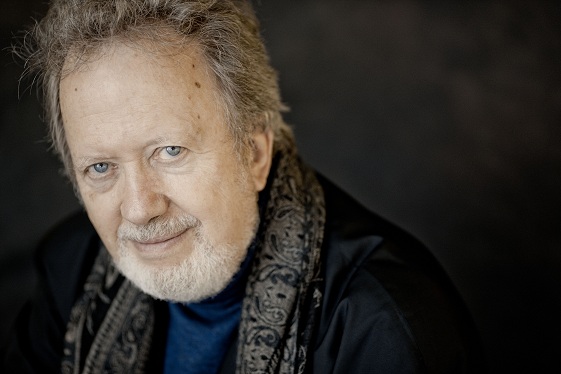Chicago Bach Project moves downtown with a worthy “St. Matthew Passion”
John Nelson has run the circuit, musically speaking, with his Chicago Bach Project, having now performed all three of the great Bach choral masterpieces.
This year for his annual Easter-time event, Nelson returned to the largest of the set, Bach’s St. Matthew Passion, which began the series in 2011.
Yet Friday night’s performance marked a significant change, with the Chicago Bach Project decamping from its previous venue, St. Vincent de Paul Parish, for the Harris Theater.
While the beautiful Lincoln Park church offered much visual and architectural splendor, the vast space was problematic for several reasons: horrific parking, limited restroom facilities and an over-reverberant acoustic that often reduced words and musical details to a mushy blur.
The Harris Theater is a vast improvement logistically with a convenient downtown location and more user-friendly services.
Yet there are trade-offs. Most obviously, the cold industrial-modernist room has none of the architectural beauty or ecclesiastical element that adds an undeniable if intangible sense of rightness to performances of Bach’s religious masterworks. (A large simple wooden cross was hung on the back wall of the Harris stage to set the tone of spiritual contemplation.)
And while Harris offers an acoustic of greater clarity, it goes to the other extreme of St. Vincent de Paul with a decidedly dry and streamlined sound—which made this St. Matthew Passion performance feel somewhat “smaller” and less grand of an event.
Nelson’s Bach style is now a familiar commodity in Chicago–a convincing blend of stately spirituality and expressive poise with bristling dramatic bite.
Still, even with a solid and often inspired lineup of soloists and fine orchestra playing and choral singing, Friday’s performance of Bach’s epic musical passion took a while to spark to life. For most of Part One, there were extended passages that felt more prosaic than reverential with a crucial lack of tension. After intermission, as the gospel narrative entered Part Two depicting Jesus’s arrest, trial and crucifixion, the performance grew more gripping, with more committed choral singing and greater expressiveness in the arias.
Of the soloists, the two returning singers provided the most consistent rewards. Nicholas Phan, heard just last month in Music of the Baroque’s performances of Haydn’s The Creation, was a first-class Evangelist. Like most singers, he was challenged at times by some of Bach’s stratospheric writing. Yet otherwise, Phan was excellent, singing with a strong, plangent tenor and bringing fizzing, even operatic involvement to the narrator’s role.
Placed behind the other soloists on a high platform, bass-baritone Stephen Morscheck once again brought great dignity and vocal gravitas to Jesus, singing with a natural authority.
Lisette Oropesa’s slender soprano has a boy alto-like tone, not inapt for this music. Yet while she sang sensitively in her arias, one often wanted a richer, more varied tonal palette.
Mezzo/contralto soloists have been a consistent weak link in this Bach series. So, it was an inspired idea to hand off these arias to a countertenor this year. Lawrence Zazzo sang with consistent dramatic involvement and agility in his arias.
Tobias Greenhalgh tackled Judas, Peter and assorted malign authority figures with an ideal dark, firmly focused baritone. Tenor Colin Ainsworth and bass-baritone Matthew Brook each provided worthy vocalism in their solo moments as well.
The St. Matthew Passion calls for large forces, including two antiphonal orchestras and a double chorus. Under Nelson’s attentive direction, both orchestras played well with members excelling in their obbligato moments, particularly violinist Robert Hanford and flutist Mary Stolper. Organists Stephen Alltop and Jason Moy were exemplary throughout.
Like most of the performance elements, the two choruses, prepared by Donald Nally, sounded a bit slack in Part One, singing with much greater cohesion and tonal richness after intermission.
Posted in Performances



